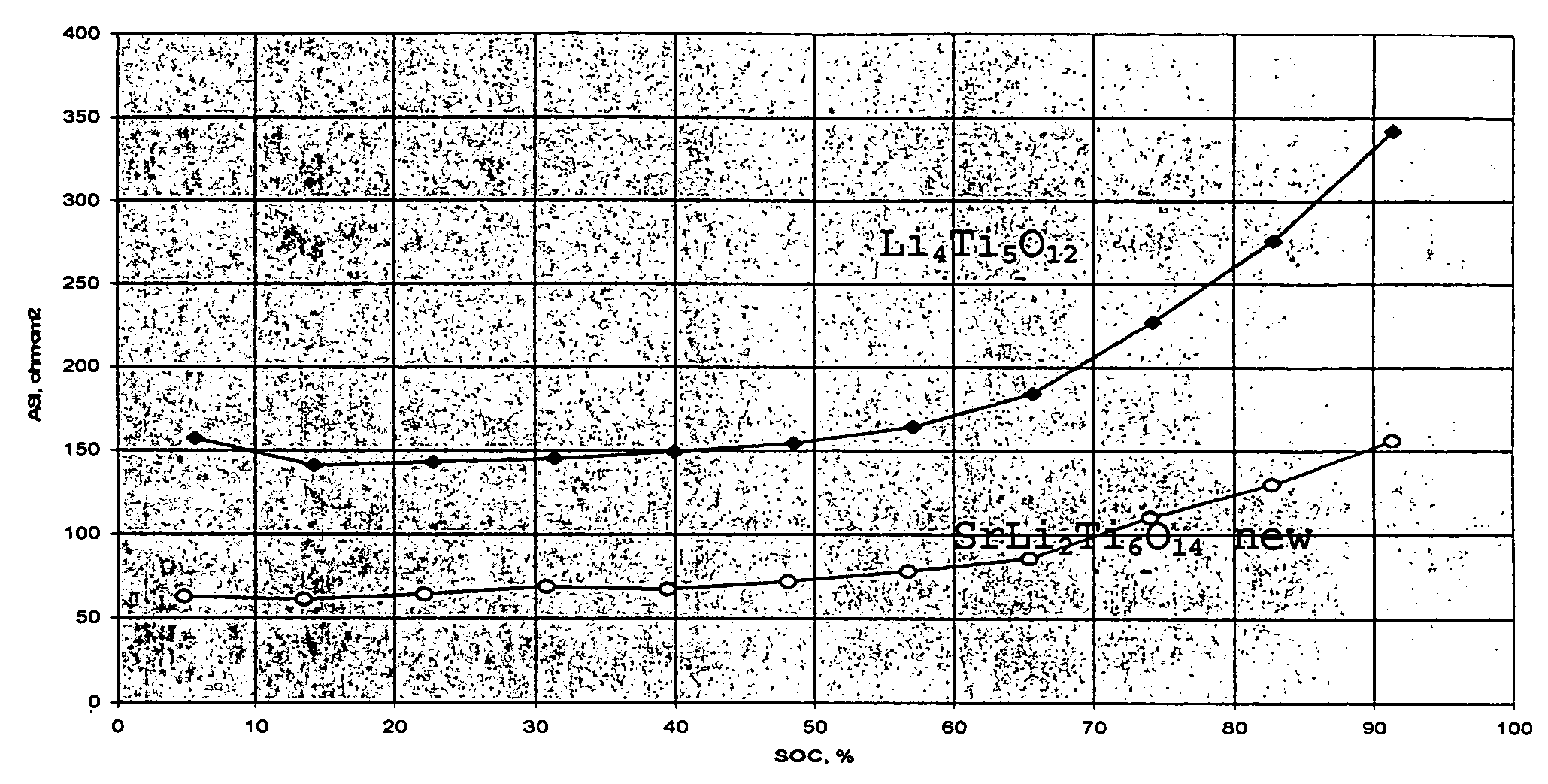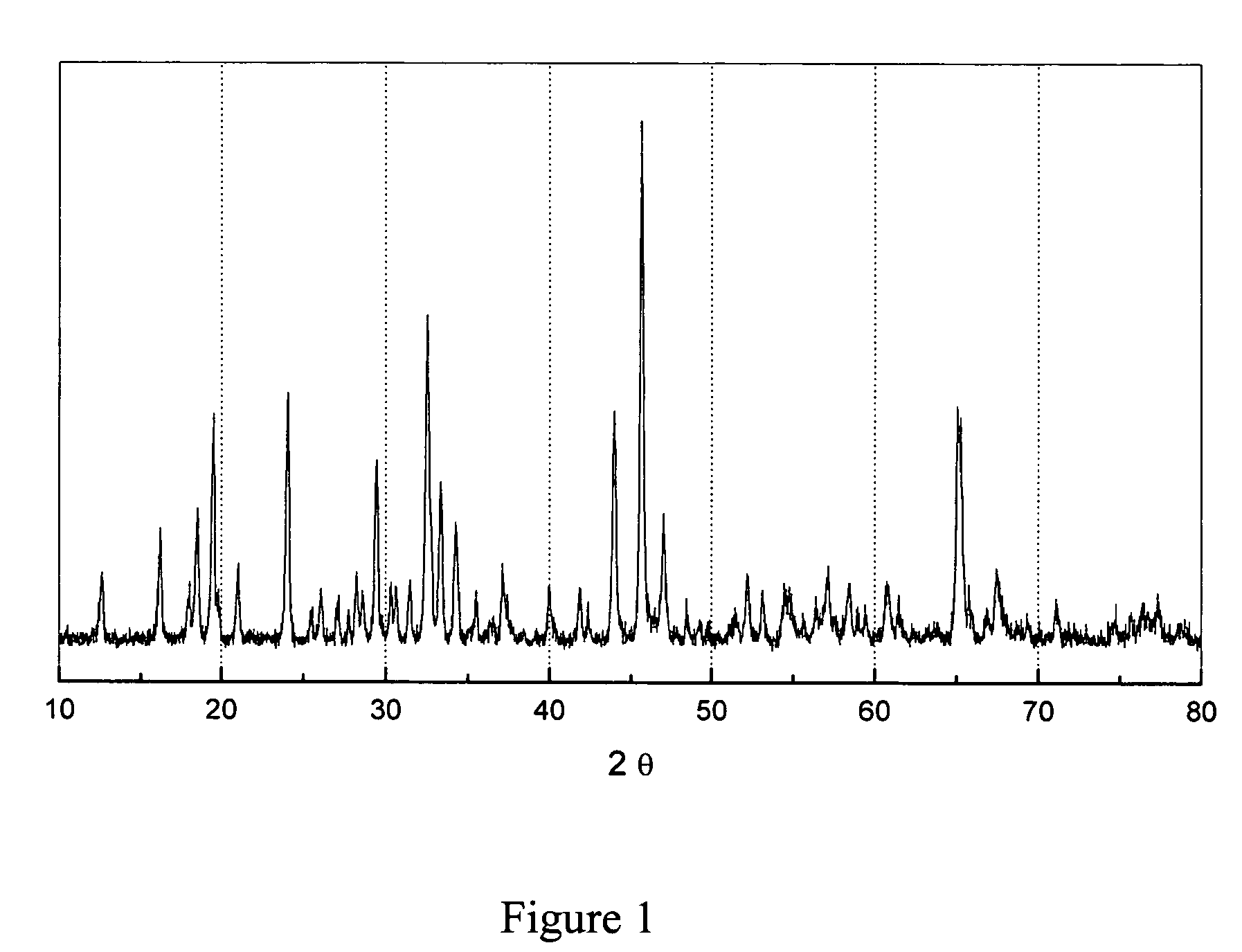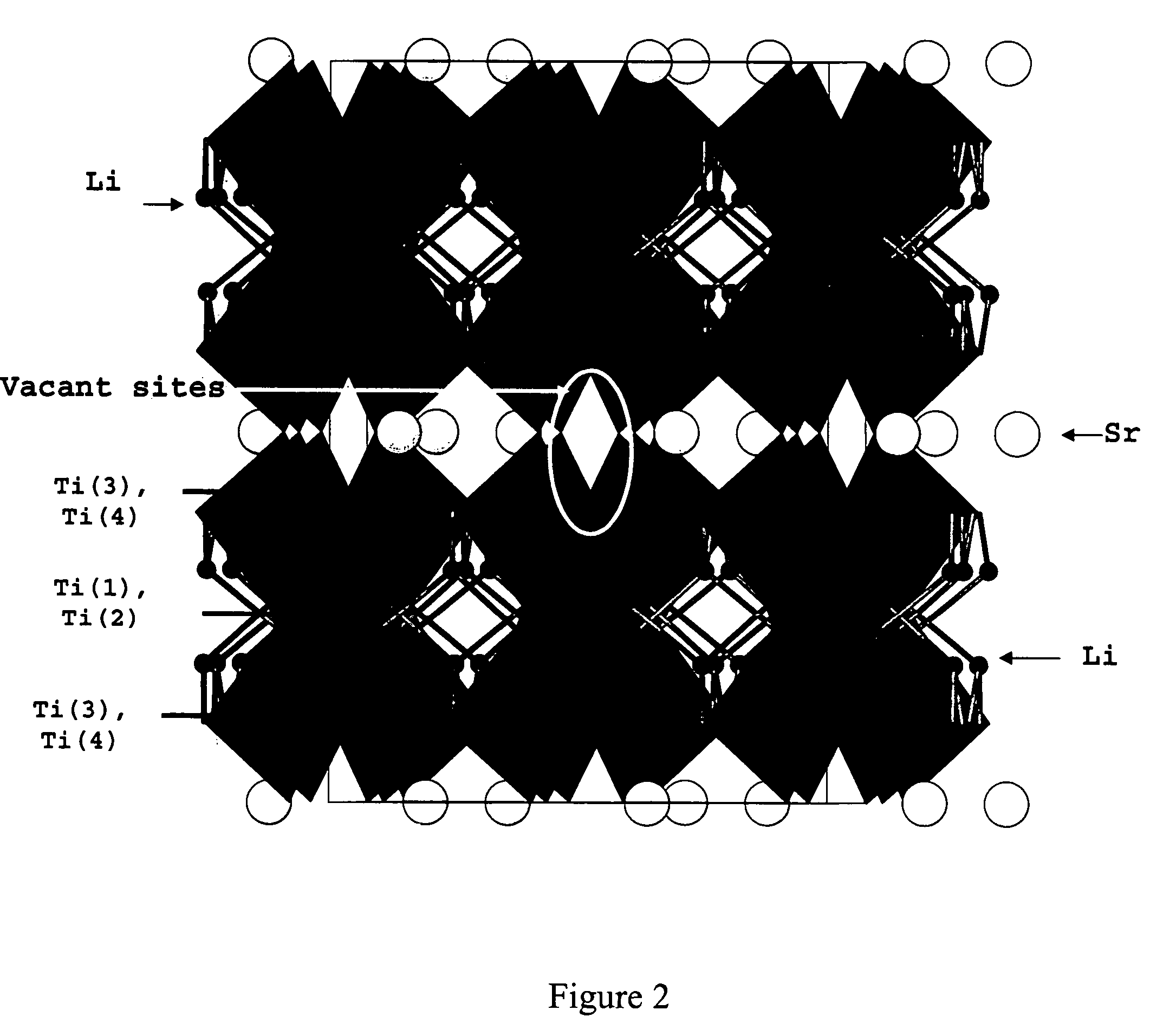Anode material for lithium batteries
a lithium battery and anode technology, applied in secondary cell servicing/maintenance, cell components, electrochemical generators, etc., can solve the problem of limiting the utilization of high-rate applications of anode as a preferred one, and achieve the effects of high capacity, good ionic conductor, and rapid lithium ion diffusion
- Summary
- Abstract
- Description
- Claims
- Application Information
AI Technical Summary
Benefits of technology
Problems solved by technology
Method used
Image
Examples
Embodiment Construction
[0018]Compositions of matter, articles of manufacture and methods for manufacture are set forth herein for preparation of battery electrodes and a non-aqueous lithium ion battery.
[0019]To that end, MLi2Ti6O14 (M=Sr, Ba) ceramics have been prepared by solid state reaction, starting from a mixture of strontium carbonate SrCO3 or barium carbonate BaCO3, lithium carbonate Li2CO3 and titanium (IV) oxide TiO2 anatase. The mixture was heated at 5° C. / min up to 800° C. to allow a complete decomposition of the carbonates with evolution of CO2. After grinding, the powder was sintered at 950° C. for 24 h. The resulting white polycrystalline powder was examined by X-ray diffraction to check purity of the obtained phase, as shown in FIG. 2.
[0020]The positive electrode was prepared by mixing MLi2Ti6O14 (M=Sr, Ba) with 10 wt. % carbon SP and 10 wt. % PVdF binder in NMP solvent. The resulting paste was spread on copper foil. The electrolyte was 1M LiPF6 in (1:1) ethylene carbonate (EC) and diethyl ...
PUM
 Login to View More
Login to View More Abstract
Description
Claims
Application Information
 Login to View More
Login to View More - R&D
- Intellectual Property
- Life Sciences
- Materials
- Tech Scout
- Unparalleled Data Quality
- Higher Quality Content
- 60% Fewer Hallucinations
Browse by: Latest US Patents, China's latest patents, Technical Efficacy Thesaurus, Application Domain, Technology Topic, Popular Technical Reports.
© 2025 PatSnap. All rights reserved.Legal|Privacy policy|Modern Slavery Act Transparency Statement|Sitemap|About US| Contact US: help@patsnap.com



